PIMCORE ON AZURE – DEPLOY INSTANTLY WITH HAMARI’S PRE-CONFIGURED VM
Get Pimcore Up and Running on Azure in Minutes
We’ve made it easy to get started with Pimcore on Azure. Our pre-configured Virtual Machine lets you deploy Pimcore in just a few clicks, without the usual setup time or complexity.
If you need a hand along the way, we’re here to help. We offer free onboarding support to guide you through the initial setup and make sure you’re up and running smoothly.
What is Pimcore?
Pimcore is a powerful, open-source digital experience platform trusted by global brands. It seamlessly integrates:
- Product Information Management (PIM)
- Master Data Management (MDM)
- Digital Asset Management (DAM)
- Digital Commerce & Experience Management (DXP)
- Content Management System (CMS)
Leading businesses use Pimcore to centralize product data, manage digital assets, streamline content distribution, and enhance their customers’ digital experiences.
Why Choose Hamari's Pimcore VM on Azure?
Deploying Pimcore manually can be complex and time-consuming. With Hamari’s Azure VM, you can get Pimcore up and running quickly—no complicated setup required. Whether you’re just starting with product data management or need a robust solution for a large business, this VM gives you a solid foundation to build on and the flexibility to grow.
Key Benefits
- Rapid Deployment: Launch Pimcore in minutes with no manual setup.
- Secure & Reliable: Take advantage of Azure’s industry-leading security, reliability, and global reach.
- Cost-Efficient: Pimcore Community Edition is open-source (GPLv3 license) with no software fees—pay only for your Azure usage.
- Production-Ready Stack: MariaDB, Redis, RabbitMQ, and Supervisor are pre-installed and configured.
- Expert Support: Free onboarding and best-practice advice from Pimcore-certified specialists at Hamari.
- Enterprise Scalability: Ideal for product teams, omnichannel commerce, and organisations looking to future-proof their data architecture.
Step-by-Step: How to Deploy Your Pimcore VM
1. Azure Marketplace Setup
- Visit: Pimcore VM by Hamari
- Here, you can find Hamari’s pre-configured Pimcore VM on the Azure Marketplace. Click "Create" to start the deployment process:
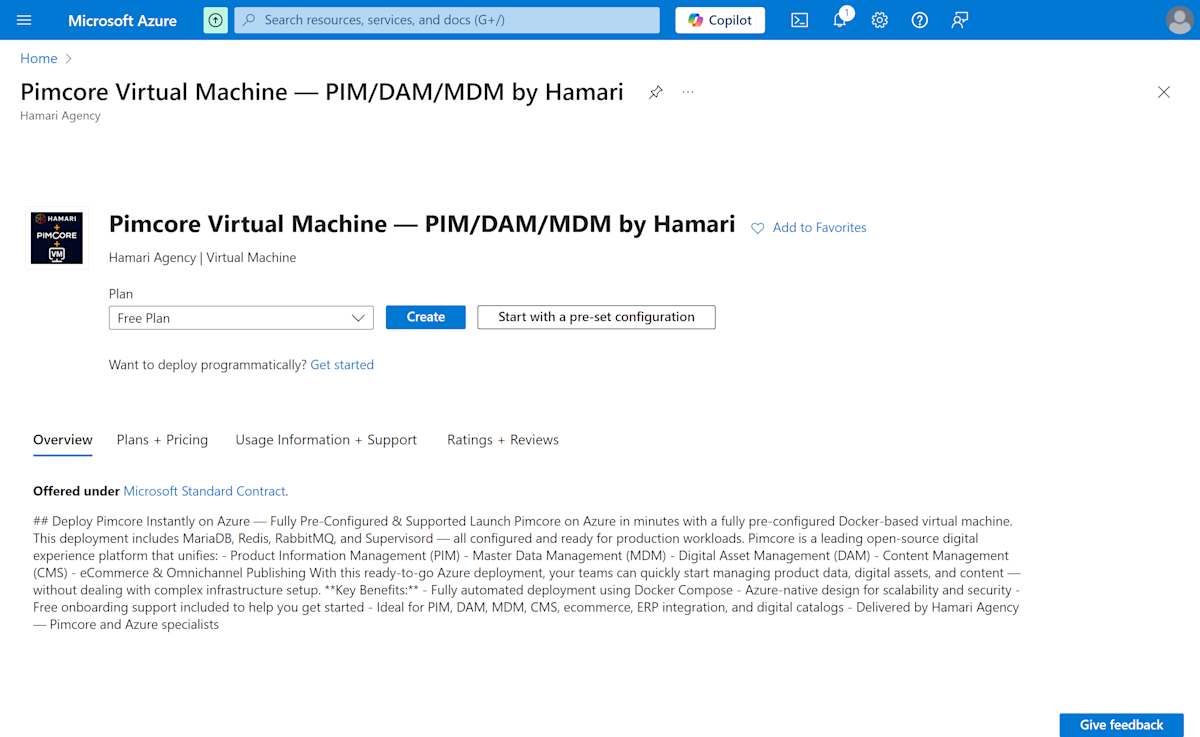
2. Configure Basic Settings
- Here you fill in the basic details for your VM, such as subscription, resource group, VM name, and region. Choose your preferred Azure region and set a name you’ll recognize. For size of the VM, we recommend selecting the "Standard B2s" size, which offers a good balance of cost and performance:
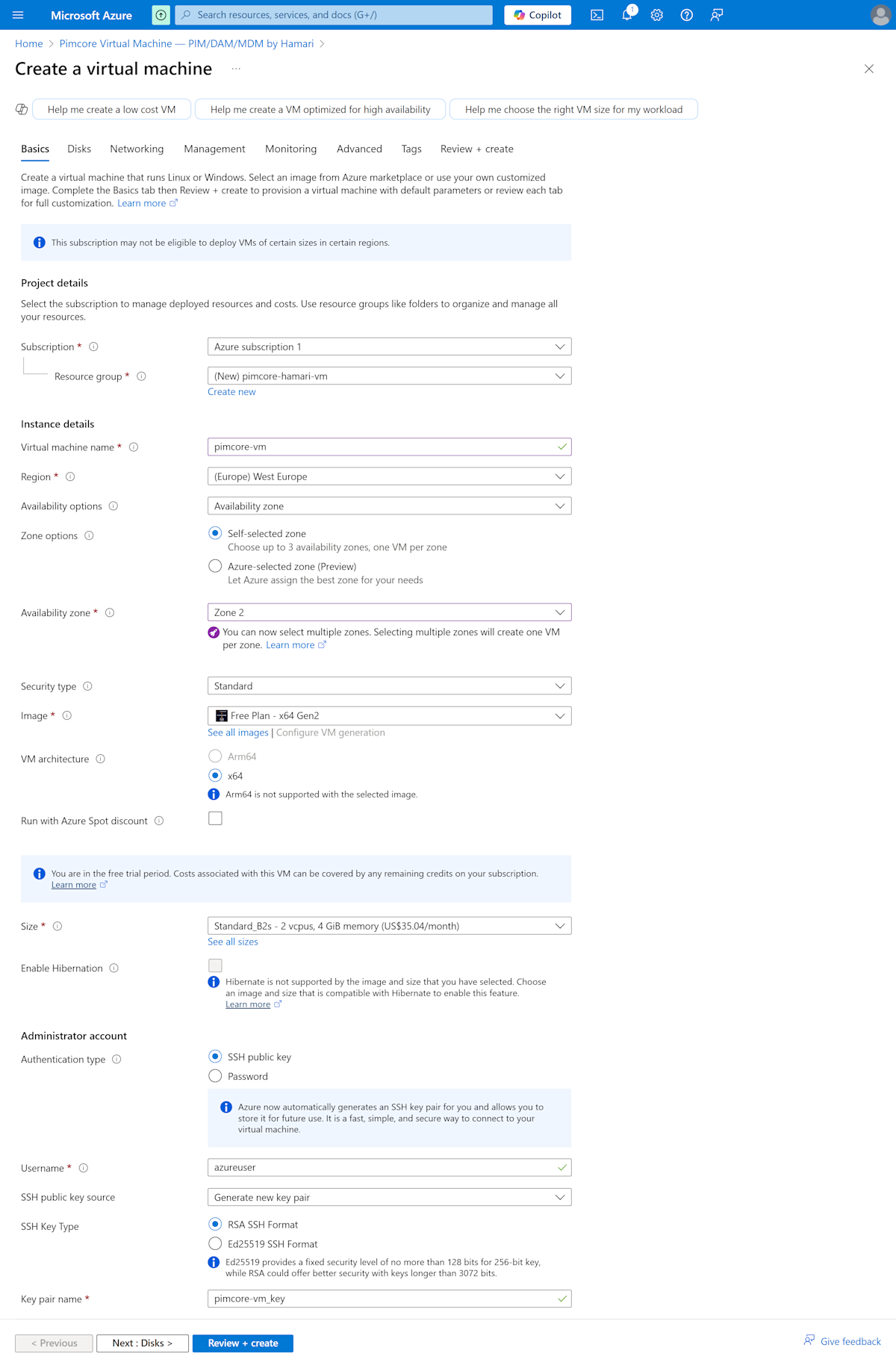
3. Configure Disks & Networking
- Here you can choose your disk type and size. The default Premium SSD option is fast and suitable for most workloads:
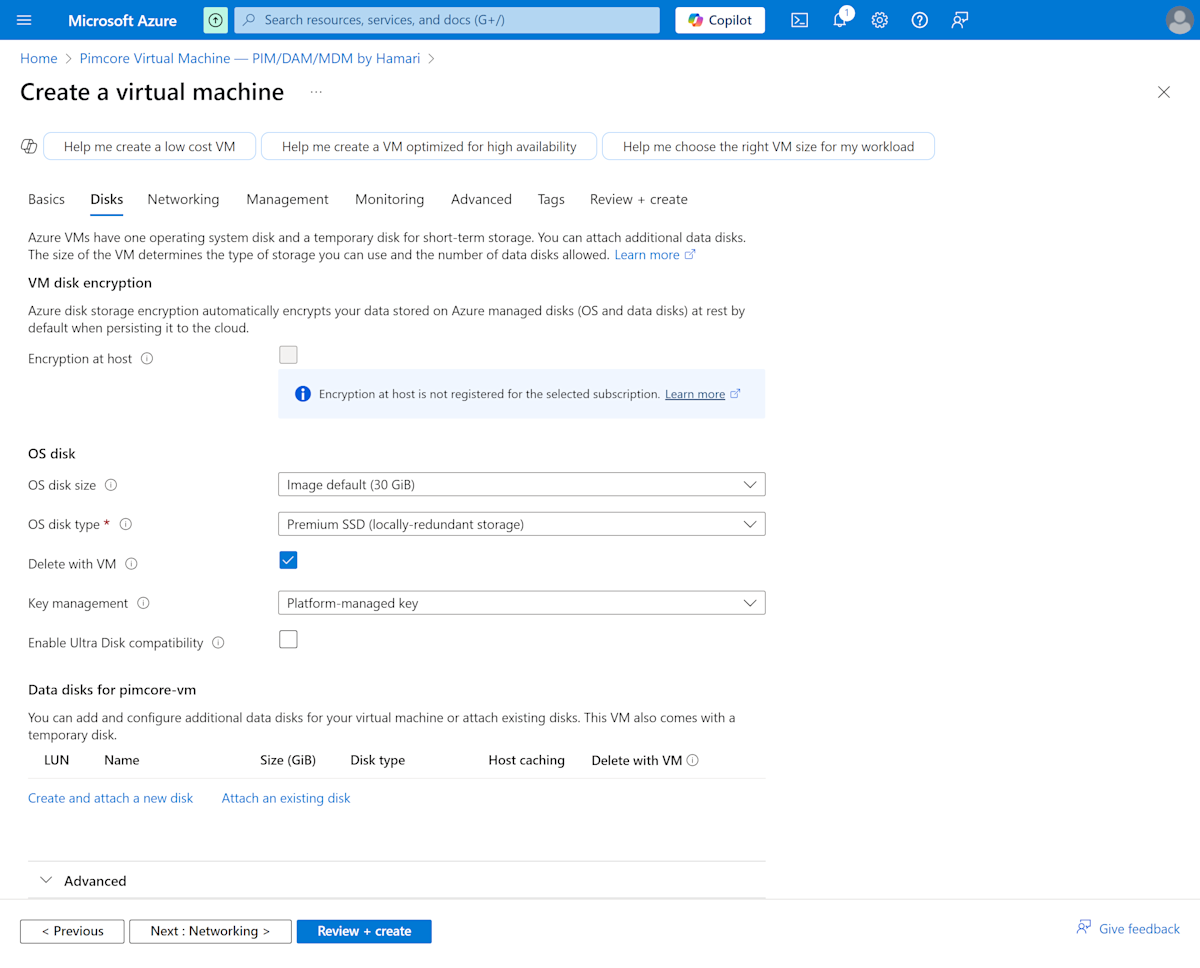
- Here, you set up networking for your VM. Creating a new Virtual Network (VNET) and Public IP ensures your Pimcore instance is accessible. The default settings work well for most users:
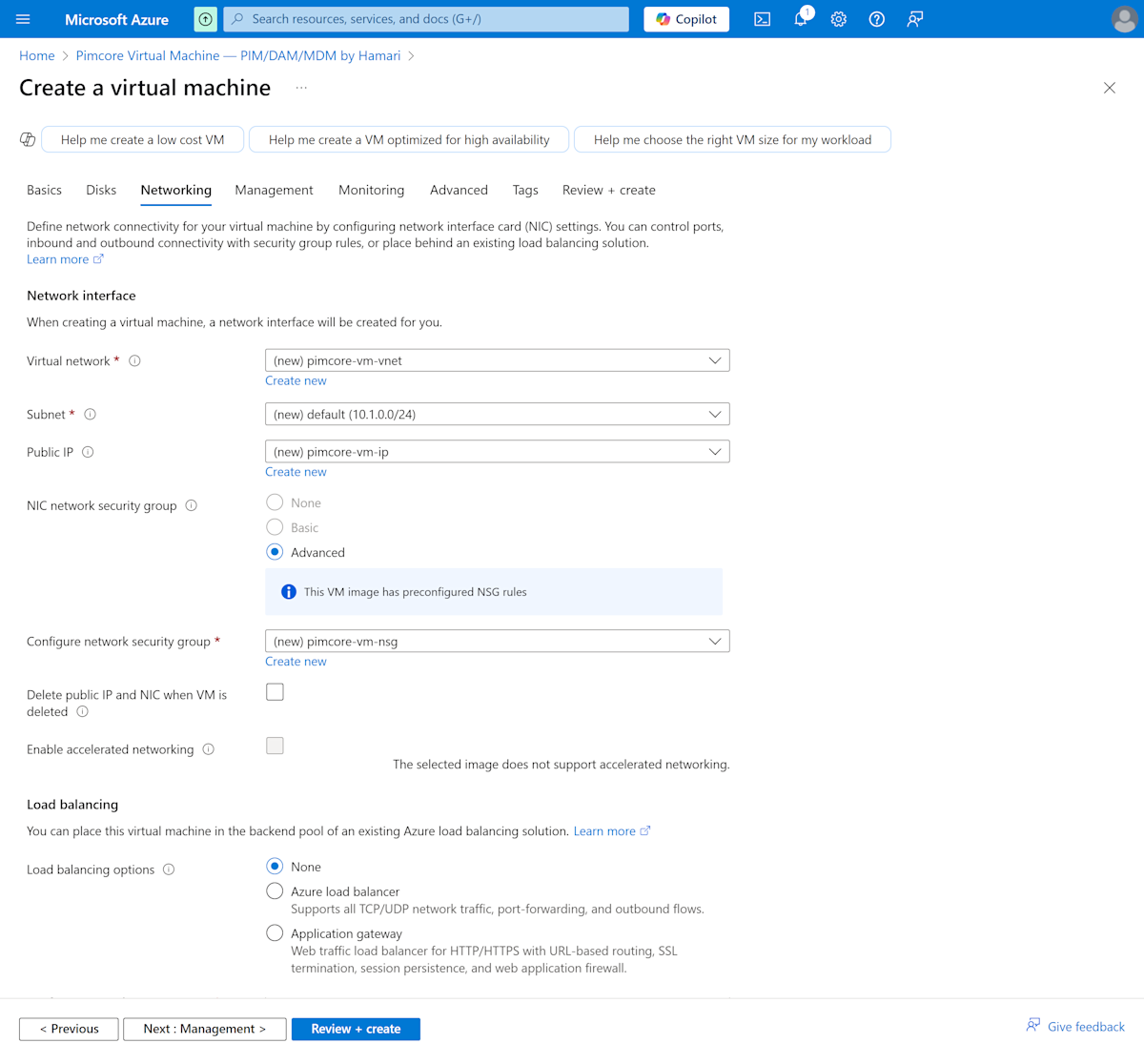
4. (Optional) Management & Monitoring
- Enable auto-shutdown, boot diagnostics, and any monitoring features you need
5. Deploy Pimcore
- Review your settings, then click “Create” to deploy your virtual machine.
- Deployment usually takes a few minutes.
6. VM Resource Overview
- Here’s your VM’s overview page in the Azure Portal. After your deployment is complete, this is where you’ll find key information about your virtual machine, including the “Public IP address”:
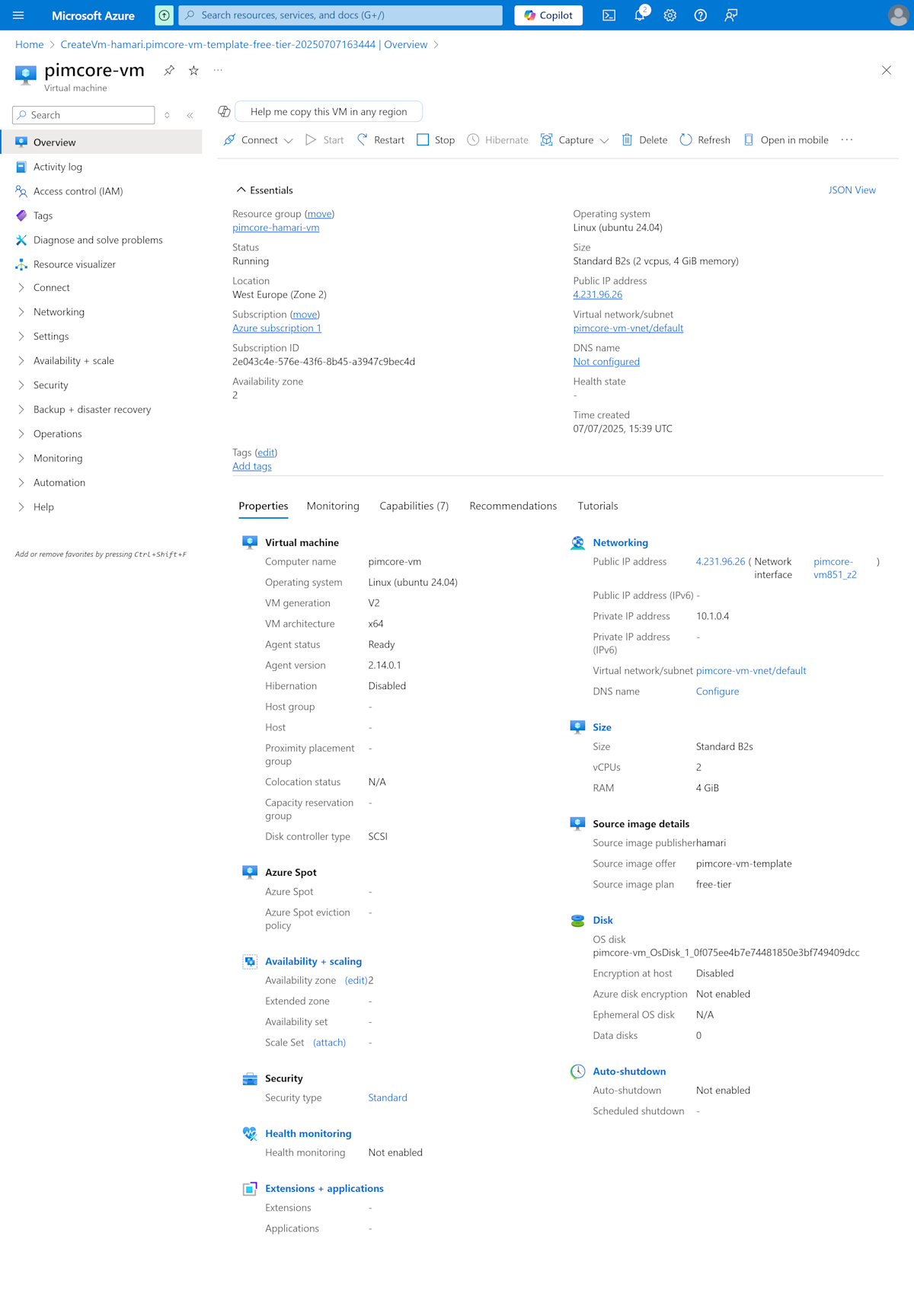
7. Access Pimcore
You’ll use this IP address to access the Pimcore admin panel in your web browser.
- For example, if your public IP is 4.231.96.26, open your browser and go to http://4.231.96.26/admin
- Here you will see the Pimcore admin dashboard, where you can manage your product information, assets, and more:

8. Initial Login & Security
For security, we recommend creating new admin accounts with restricted access for daily use. Login using the following credentials:
- Default username: pimcore
- Default password: pimcore
Go to Settings > Users / Roles to change your password and manage user accounts. Make sure to update the default password immediately for security.
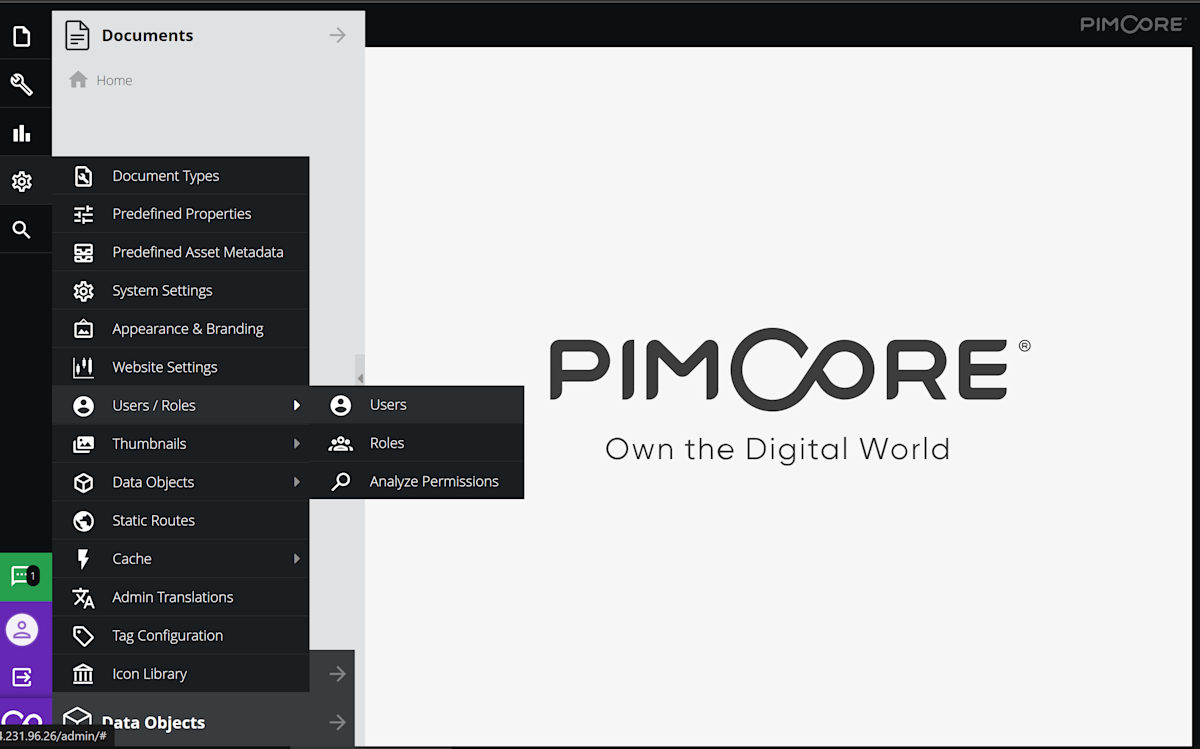
Enterprise-Grade Azure Infrastructure & DevOps Solutions
1. CI/CD Pipeline Integration
We can help you set up continuous integration and continuous deployment pipelines using Azure DevOps or GitHub Actions. This allows you to release updates faster, automate code deployments, and maintain consistency across dev, staging, and production environments.
2. Resource Isolation & Compliance
For organisations that require strict separation of workloads, we assist in designing environments where each business unit or application has its own resource group, network security, and access controls—all built to meet compliance requirements such as ISO, GDPR, or SOC2.
3. Advanced Networking & Security
We can help you design:
- Private Virtual Networks (VNet) with restricted access
- Application Gateways and Load Balancers for traffic management
- Custom firewall and security group policies to tightly control access
Designing a Future-Ready, Scalable Pimcore Architecture on Azure
The diagrams above illustrate how we help businesses move beyond a simple deployment to build a scalable Pimcore architecture on Azure.
At Hamari, we work alongside your team to design and implement a modular, cloud-native Pimcore solution that’s built for flexibility, security, and long-term growth. This architecture separates key components, such as database, caching, storage, and compute, into dedicated Azure services, allowing you to scale and manage each part independently.
Key features of this architecture include:
Independent Scaling for Each Layer
We separate Pimcore’s key components—database, cache, storage, and application layer—into distinct Azure services. This means you can scale individual services based on their specific demands without overprovisioning or creating unnecessary costs:
- Scale the Azure Database for MySQL independently when you need faster transactions or to handle larger datasets.
- Increase Azure Redis Cache capacity to improve performance under heavy user loads.
- Expand storage for media assets without impacting your core application.
- Scale out the application layer using AKS (Azure Kubernetes Service) or VM Scale Sets to handle peak traffic.
This gives you granular control over costs, performance, and resilience.
Multiple Environments with CI/CD Release Pipelines
We help you build separate, isolated environments for:
- Development (Dev)
- User Acceptance Testing (UAT)
- Production
Each environment has its own resource group, network policies, and identity controls. By integrating CI/CD pipelines using Azure DevOps or GitHub Actions, you can:
- Automate code deployment to each environment.
- Implement approvals and security checks before production releases.
- Roll back safely in case of issues.
This approach reduces risk, speeds up deployment cycles, and improves collaboration between development and operations teams.
Enterprise-Grade Security, Governance, and Backup
Our solutions adhere to best practices for cloud security:
- Network isolation through Azure VNets and firewalls.
- Role-Based Access Control (RBAC) and identity management using Azure Active Directory.
- Data encryption at rest and in transit.
- Automated backups and disaster recovery configurations.
We design your environment to meet compliance needs (ISO, GDPR, SOC2) and provide ongoing support for security posture management.
Future-Ready: Containers & Microservices
For organisations looking to modernise further, we help you gradually transition to containerised or microservices-based architectures. This allows you to:
- Deploy Pimcore in AKS (Azure Kubernetes Service) for higher availability and easier scaling.
- Split workloads across multiple services (e.g., separating DAM-heavy workloads from eCommerce traffic).
- Take advantage of autoscaling, self-healing, and blue-green deployments.
Our architecture ensures that you can start simple but scale into enterprise-grade cloud-native infrastructure without rework.
